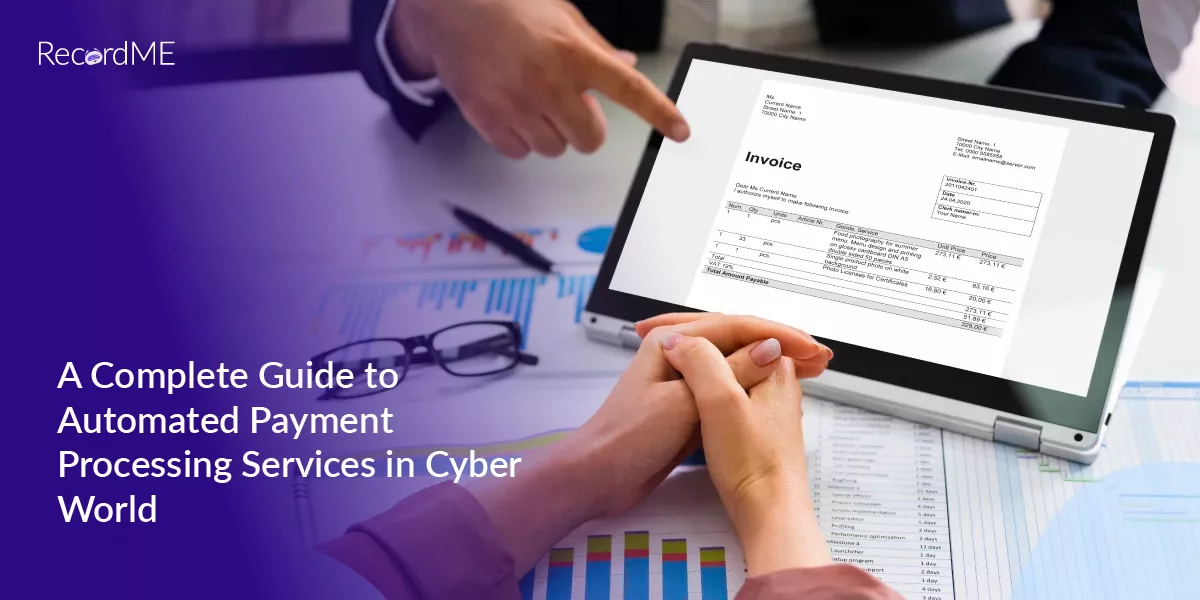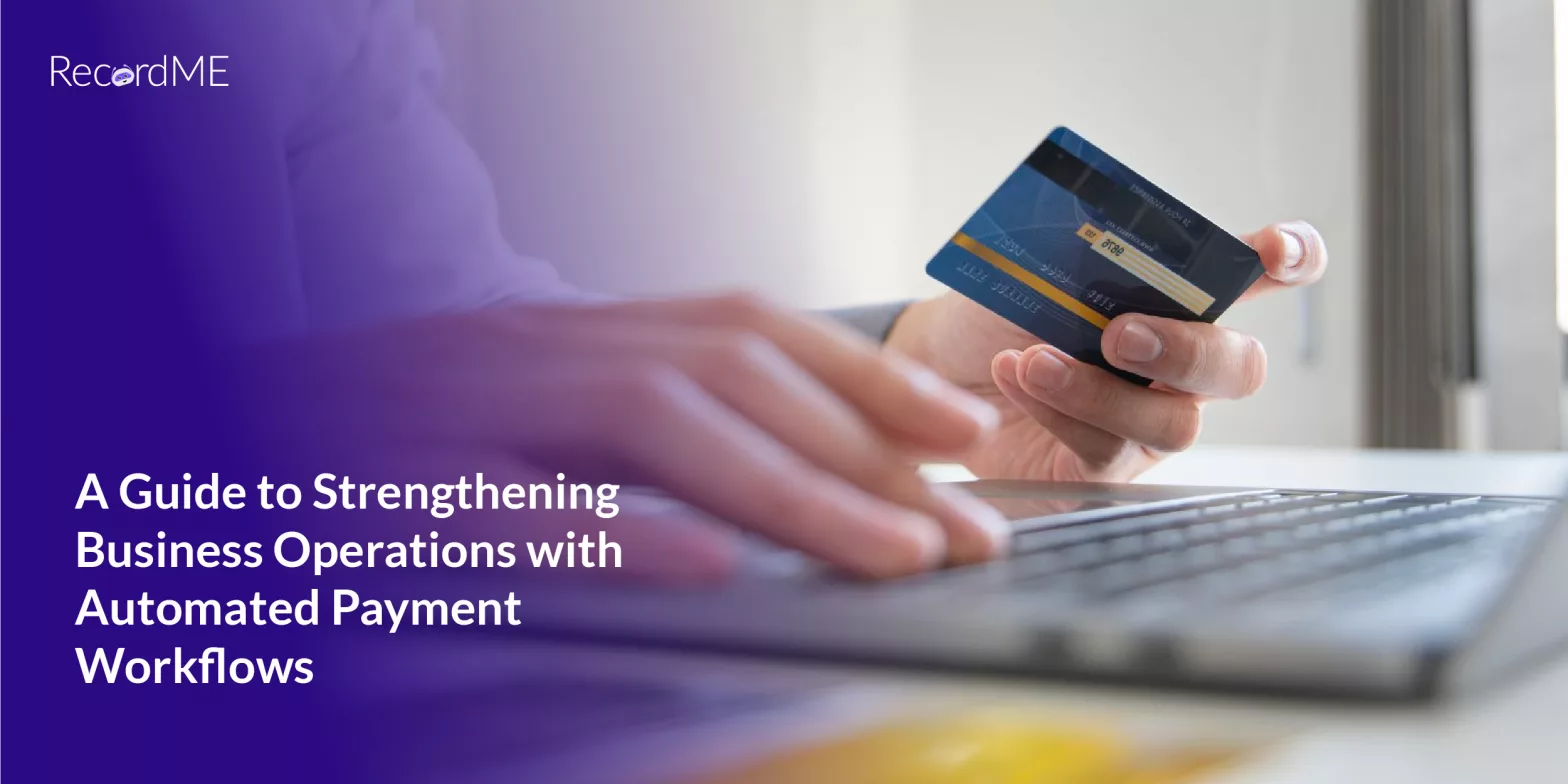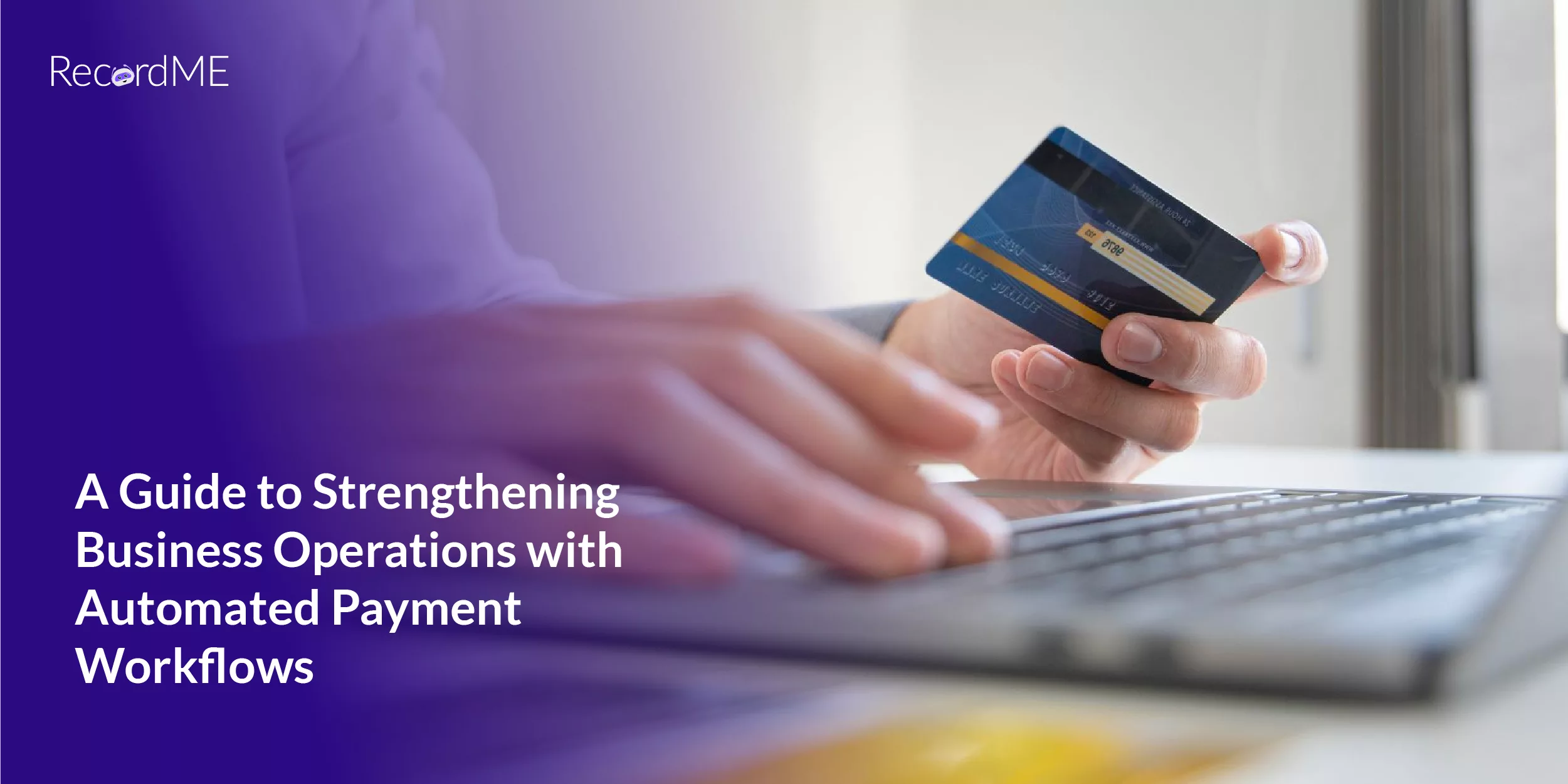A Comprehensive Guide on Automated Payment Processing Solutions for Businesses

In This Post
Compared to manual methods, automated payment processing systems have several advantages. They lessen expenses, expedite the processing of invoices, and reduce mistakes. ERP systems can become more efficient, budget-friendly, and less vulnerable to interference by integrating automated payment processing software.
A company’s entire operation will stop if its payment processing system is antiquated and unable to handle purchases swiftly enough. That being said, the US spends an estimated $3 trillion managing Accounts Receivable (AR) when utilising paper-based payments. As a result, using automated payment collection software offers excellent customer service while streamlining the payment process. Yet automated payment systems can provide numerous other advantages.
Let’s talk about how automated payment processing services simplify accounting work for financial institutions in this blog.
What Problems Does Automated Invoice Payment Processing Solve?
Despite the wide range of tools available to them, finance teams still spend most of their time performing manual labour. These include managing transactions, paying bills, gathering checks, arranging financial information, and coordinating transactions. This lengthy, intricate, and error-prone process causes delays and replaces qualified accountants.
In addition to being expensive and ineffective, physical labour also puts a needless danger of mistakes. However, according to The Street, the cost of processing a single invoice might range from $16 to $22. When comparing several transactions with corresponding bank records or invoices, mistakes might quickly happen. Accountants also frequently have to enter data into other systems, such as inventory management programs and ERP systems. This aggravates error risk.
The business also needs to complete payment processing tasks manually. To handle paper checks and invoices, the employees must be present on-site, even if they digitise each payment by inputting data into their ERP. Because of this, it is challenging to use the traditional payment method for remote employment.
A lot of financial solutions for firms duplicate manual processes, lack clean data, and don’t integrate well. The features might be more sophisticated than those of the marketing or CRM systems in use today.
These difficulties lead to the finance team’s frequent overwork and disengagement. Secure payment processing methods might lessen or eliminate these recurring issues.
What Effect Did COVID-19 Have on Payment Processing?
The global economy experienced difficulties as a result of the COVID-19 epidemic. Consequently, it became essential for businesses to implement wireless payment options. Executives were forced to make difficult choices to address supply chain difficulties and pricing rises. To improve the company’s cash flow, strategic investment choices have been made to improve accounts receivable management. Business owners want CFOs to spend less time on administrative work and more time on analysis and long-term plans.
Recent research shows that accounts receivable departments held up to $3 trillion. As a consequence of this, the market as a whole will experience adverse effects. 68% of businesses with late payments reported cash flow issues.
Since many workers prefer telecommuting, it makes sense to switch to an automated payment processing system at least sometimes. Not only is it practical, but it also makes economical sense.
How Automated Payment Processing Works With A Firm’s ERP
Combining automated invoice payment processing with an effective enterprise resource planning system can help businesses in several ways:
-
No More Missing or Mishandled Invoices
Late payments might arise when customers either miss or ignore an invoice or a reminder. Automatic invoice payment processing software lets firms link ERP data to track and report invoice status. They can track invoices, set reminders, and flag problematic accounts.
-
Lower DSO
Every team aspires to lower their rates of past-due invoices or Days Sales Outstanding (DSO). However, manual account analysis is time-consuming and labor-intensive. Automating the collection process is much simpler when the company’s payment processing systems and ERP data are combined. Businesses can, therefore, gather information for analysis and reporting, enabling teams to concentrate on high-risk clients.
-
Cost-Effective
A business may reallocate some of its accounting costs to fulfil other organisational requirements if its systems are automatically updated with trustworthy transaction data. It consequently requires less continual supervision.
Businesses will constantly require the assistance of a trained accountant to maintain appropriate tax management, financial data analysis, and records. In addition, accurate reporting might help them avoid additional expenses related to processing payments, such as legal fees resulting from accounting errors.

Perks of Automated Invoice Payment Processing
Automated payment processing systems support business expansion and offer a quick turnaround time. Below are some significant advantages:
-
Accelerated Time-To-Cash
Improved cash conversion cycles speed up payment collection by accelerating time-to-cash. Paying suppliers and expanding can be done with additional resources. Faster billing and early payment discounts save money.
-
Reduced Errors
Payment process problems result in time wastage, damaged relationships, and repeated payments. Businesses can expand with little difficulty when utilizing trustworthy payment processing software. It checks for outliers and double-checks inputted data.
-
Fraud Prevention
PCI-DSS-compliant automated systems can control user behavior. This technology also finds and notifies incorrect payments and invoices. These characteristics reduce fraud and risk.
-
Increased Visibility
Businesses can gather more information in order to better analyze payments and provide reconciliation statistics. Automation of payment processing is turning into a key priority for finance professionals. It aids in cash flow forecasting and management.
How Can RecordMe Help?
An automated accounting platform, RecordMe, offers state-of-the-art payment processing software. RecordMe is an excellent tool for streamlining accounting processes because of its various features and benefits. That’s how:
- Efficiency and Time Savings: Makes it possible to process payments quickly and accurately.
- Greater Accuracy in Compliance: Prevents fines by demanding prompt processing of invoices and meticulous attention to detail.
- Prioritisation: It arranges your payments according to their due dates to save you money on late penalties.
- Reduce Costs: Offers software to automate payment processing, which reduces costs by doing away with the need for human accountant support.
- Enhanced Workflow Efficiency: Identifies inefficiencies in your processes, boosts output, and reduces errors.
- Fraud Detection: Keeping an eye on financial transactions in real time to lessen the likelihood of fraud.
- Invoice Automation: Improves transparency, cuts down on time spent on accounting-related duties, and fortifies supplier relationships.
Still having trouble deciding how to make quicker, more informed billing decisions? Contact with Us!
Frequently Asked Questions (FAQs)
Q1. What is the Meaning of Payment Processing?
Ans. When a business conducts electronic banking transactions, payment processing begins. It includes processing cards, opening secure gateways, and communicating with supplying banks and customer accounts.
Q2. What are Automated Payment Services?
Ans. An automated payment service helps financial firms collect data and take action with minimal human intervention. Automating payment processes eliminates errors and speeds up processing while improving transparency, security, and efficiency.




